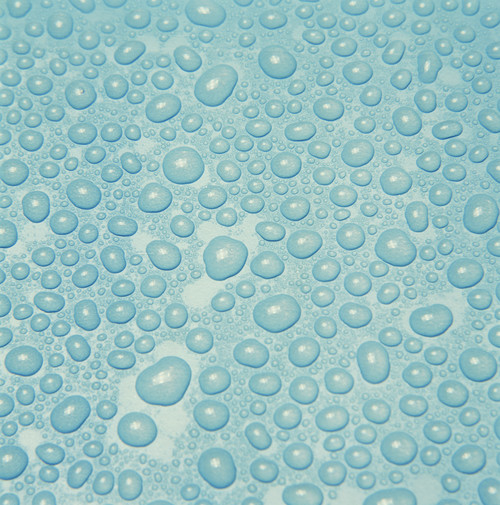As we enter the cold and snow filled season of winter here in New York I would like to take a brief moment and help educate you on the importance of monitoring and adjusting your humidity levels inside the home.
I was recently in a home in South Salem where I noticed the drywall seams and tape joints were all peeling away and were curled. Upon further examination, I found suspected black mold colonies beginning to form on the pitched ceiling. After flowing through the rest of the home I began to notice condensation on the insides of all of the windows (it was only 45 degrees outside?). This had apparently been going on for some time because the windows all had black mildew / mold growth present on the interior window frames.

Water Droplets — Image by © Royalty-Free/Corbis
The homeowner stated that they run a humidifier in the home every night because their doctor said it was necessary. A quick measurement in the kid’s bedroom indicated a humidity level of over 58%, and the humidifier had not been running for a good three hours prior to my arrival. In addition, there was an Aprilaire humidifier installed on the furnace unit which was running and set at maximum. A large 55-gallon aquarium also was present in the family room. The one and only bathroom had no exhaust fan and no window, thus no ventilation. All in all, the home was a virtual steam room.
I may ruffle the feathers of a few medical professionals here, but the constant recommendations of running humidifiers and vaporizers have gotten out of hand. If your child has a bout with the flu bug or common cold, then by all means run a humidifier in their room while they are sleeping. Turn the unit off when they wake up, and back on at bedtime. When the cold and flu symptoms are gone, quit using the vaporizer!!
Furthermore, whole house humidifiers installed on furnace units should never be set above 25-35% humidity. Any more than that, and you are potentially growing mold and risking poor indoor air quality. And in the case of the South Salem home, damaging the structure and likely making everyone even sicker due to the mold exposure.
An easy and inexpensive solution is to purchase a hygrometer (an
instrument used to measure humidity) and place one on each level of the
home. These are available at online retailers such as Amazon or at
specialty stores such as Brookstone or Sharper Image. This way you can
accurately monitor your humidity levels and make adjustments as
necessary. A rough guideline for ideal humidity level is 25-35% REL.
For inaccurate adjustments … (not my recommendation mind you) if you
… (not my recommendation mind you) if you
have condensation forming on windows, walls, ceilings then yes you
have too much humidity. On the opposite spectrum, if you are plagued
with static electricity, bloody noses, or extremely dry skin or hair
then you likely need to increase your humidity levels.

